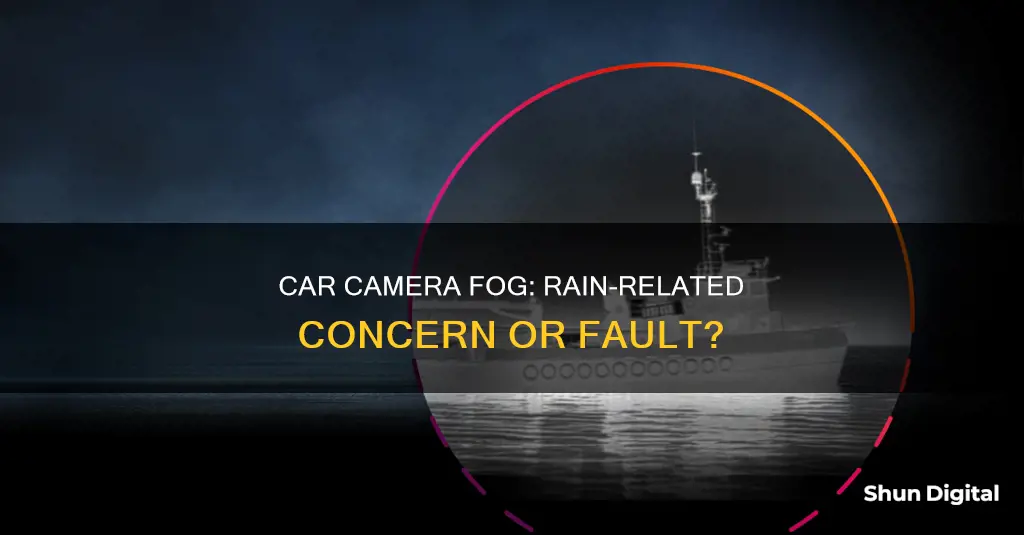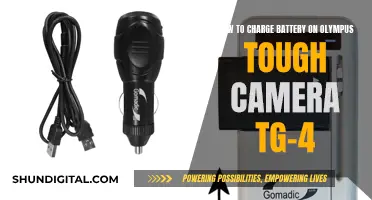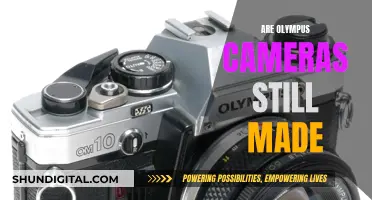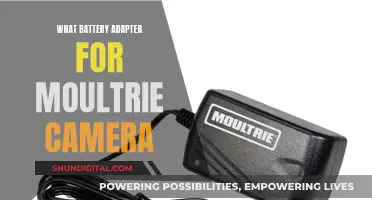
Car cameras, or backup cameras, are designed to assist drivers when reversing. They can be particularly useful in parking lots or when exiting a parking space. However, their effectiveness is often diminished in bad weather, especially when it is raining or snowing. This happens when water or snow sticks to the camera lens, causing blurry or foggy images. This issue is common across many car makes and models, with some exceptions, such as certain Volkswagen models, which have a rear camera mounted inside the rear end's VW emblem. While there are some workarounds, like using hydrophobic fluids or keeping a cloth to wipe the lens, these solutions are not always effective or convenient. This problem highlights the need for better car camera designs or features that can address the issue of water accumulation and maintain clear visibility during rainy conditions.
| Characteristics | Values |
|---|---|
| Car camera fogginess | A common issue |
| Causes | Rain, snow, slush, road salt, grime, temperature changes |
| Solutions | Wipe the lens with a soft cloth, use hydrophobic fluid, install a rear backup camera washer, place the camera inside the vehicle |
What You'll Learn

Rain and road salt can render a backup camera useless
The issue of backup cameras becoming unusable in the rain is a common problem, and many drivers have expressed frustration with the difficulty of seeing through the water and road salt. In online forums, drivers have suggested a few ways to address this issue. One solution is to manually wipe down the camera lens with a soft cloth, which can be a quick fix but may not be effective in heavy rain or when driving at high speeds.
Another suggestion is to coat the camera lens with a hydrophobic fluid, such as Rain-X, which can help repel water and prevent it from clinging to the lens. However, this solution may not be ideal for cold weather, as Rain-X should be applied at temperatures above 40 degrees Fahrenheit.
Some car models, such as the 2023 Jeep Grand Cherokee and Volkswagen Arteon sedan, have implemented innovative solutions to this problem. The Jeep Grand Cherokee features a rear backup camera washer that can squirt washer fluid onto the lens to keep it clean. On the other hand, the Volkswagen Arteon sedan has the rear camera mounted inside the rear end's VW emblem, which pivots to expose the camera lens only when the transmission is in reverse. This strategic placement protects the camera from the elements.
While these solutions can help mitigate the issue, it is important to recognize that backup cameras have limitations and drivers should not rely solely on them. Automakers advise that backup cameras are designed to assist the driver and should be used in conjunction with interior and exterior mirrors for maximum coverage. Additionally, there may be blind spots under the rear bumper that can make low-lying objects difficult to see. To ensure safe driving, it is recommended to walk around the vehicle to check for obstacles and look over both shoulders before backing up.
Charging Olympus Stylus Tough Camera: A Step-by-Step Guide
You may want to see also

Rear camera placement can affect how much rain hits the lens
Rear camera placement can significantly affect how much rain hits the lens. In some car models, the rear camera is placed almost at the very edge of the trunk, making it more susceptible to rain and road spray. This design flaw can cause water to stick to the camera lens and surrounding areas, resulting in distorted images and reduced visibility.
Some car manufacturers, like Volkswagen, have addressed this issue by strategically placing the camera to protect it from the elements. For example, in the Arteon sedan, Golf GTI, and Golf R, the rear camera is mounted inside the rear end's VW emblem, which pivots to expose the lens when the car is in reverse. Additionally, all VW SUVs and the Jetta sedan have the camera tucked under the overhang of the rear hatch or trunk, providing some protection from the rain.
Other car owners have suggested that placing the camera higher up, behind the tailgate glass, could help keep it clear, as the rear wiper could then also clear the lens. Some drivers have also recommended coating the camera lens with a hydrophobic fluid, such as Rain-X, to help repel water and improve visibility in rainy conditions. However, it is important to apply these fluids at the recommended temperatures for the best results.
While rear camera placement can impact the amount of rain on the lens, it is also essential to recognize that even with improved placement, backup cameras will still have limitations in challenging weather conditions. Drivers should not solely rely on these cameras and should also use mirrors and physically check their surroundings before reversing.
Keep Camera Batteries Warm for Winter Photography
You may want to see also

Rain-X can be used to repel water from the lens
Car cameras, or backup cameras, are designed to make driving easier and safer. They can save lives, help with parking, and reduce crashes. However, they often face issues with rain, snow, slush, and road salt, which can render them useless. Even a few raindrops on the camera lens can create blurry images.
Rain-X is a product that can be used to address this issue. It is a water-repellent and anti-fog coating designed to disperse rain from car windscreens, improving visibility during heavy rainfall. The Rain-X range includes products specifically formulated for plastic surfaces, such as car headlights, motorcycle windshields, and helmet visors.
Rain-X can also be used on camera lenses to repel water and prevent fogging. It is applied by putting some of the solution on a tissue or lens cloth and carefully applying it to the lens. The lens is then left to dry, and any excess solution is wiped off with a dry cloth. The product is long-lasting and only needs to be reapplied every three to four trips.
Some car owners have expressed concerns about using Rain-X on their camera lenses, worried that it might damage the lens or obstruct the view. However, others have found it to be an effective solution, with one user stating that it is "thoroughly recommended". It is important to note that Rain-X advises applying the fluid at temperatures above 40 degrees Fahrenheit.
In addition to using Rain-X, there are other ways to mitigate the issue of water on car camera lenses. Some car manufacturers, such as Volkswagen, have designed backup cameras that are strategically protected from the elements. Self-cleaning backup cameras are also starting to become available, with vehicles like the 2023 Jeep Grand Cherokee offering a rear backup camera washer that can squirt washer fluid onto the lens when needed.
The Ultimate Guide to Installing Camera Mods
You may want to see also

A soft cloth can be used to wipe down a camera lens
It is worth noting that some camera manufacturers recommend using a soft cloth dampened with water or a non-abrasive cleaner to wipe down a camera lens. This method can be effective for removing rain droplets or a slushy mixture from the lens in cold weather. However, it is always important to follow the specific recommendations provided by the camera manufacturer to ensure the lens is cleaned safely and effectively.
Fight Hyattsville Speeding Tickets: Payment and Beyond
You may want to see also

Some car models have self-cleaning backup cameras
Volkswagen has a different approach. On the Arteon sedan, Golf GTI, and Golf R, the rear camera is mounted inside the rear end's VW emblem, and the emblem pivots when the transmission is in reverse to expose the camera lens. This design keeps the camera protected from the elements. All VW SUVs and the Jetta sedan have the camera tucked under the overhang of the rear hatch or trunk, which also shields it from the weather.
The 2013 Nissan Altima is another model with a self-cleaning backup camera. Aftermarket self-cleaning cameras are also available, but they can be more challenging to install and maintain.
While self-cleaning backup cameras are not yet widespread, innovations in this area are ongoing. For example, Camera Cleaning Innovations LLC introduced the CLEAN-IT wireless camera cleaner in 2021, which can be retrofitted to cars and SUVs.
The Power of Battery Holders for Cameras
You may want to see also
Frequently asked questions
It is not ideal, but it is normal for car cameras to fog up in the rain. This happens when there is a temperature difference between the camera and the outside environment, causing condensation to form on the lens.
There are a few things you can try to prevent fogging. One is to coat the lens with a hydrophobic fluid such as Rain-X. Another is to use a hair dryer to gently heat up the camera and evaporate the moisture.
You can use a soft cloth, such as a microfiber cloth, dampened with water or a non-abrasive cleaner to wipe down the lens.
Rainedrops on the camera lens can cause blurry images. In addition, the rear turbulence of the car can cause a build-up of gunk, grime, and rain on the camera, further obscuring the view.
Yes, some Volkswagen models such as the Arteon sedan, Golf GTI, and Golf R have cameras that are mounted inside the rear end's VW emblem. The emblem pivots when the car is in reverse to expose the camera lens, keeping it protected from the rain.







